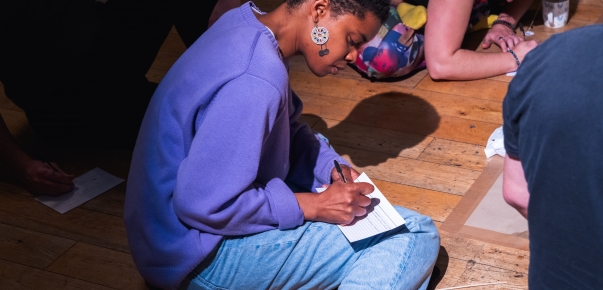Stagework: Performing History
23 Nov 2011When Thomas Coram first opened his foundling hospital, it was inundated with mothers desperate to leave their babies in a safe environment. The hospital could only accept a limited number, and those who had been rejected were often distraught. The hospital authorities feared that their disappointment would lead to violence, so they devised a system for entry to the Coram Hospital that they thought would be fair to all. The opening scene of the second Act of Coram Boy dramatises their solution: a lottery. Mothers were required to draw a ball from a bag containing a limited number of red, white and black balls. The children of those who drew a black ball were rejected, those who drew a red one were placed on a waiting list, and the children of those who drew a white ball were medically-examined and, if pronounced fit, admitted.
The authorities soon discontinued the lottery and instead instituted a petition system where parents had to plead their case in writing. Of course, many of the petitioners were poor and illiterate, and were compelled to pay what little they could to professional letter writers to help them in their pleading. They also needed, if at all possible, to obtain a personal testimony to their good character from an employer or someone in a position of authority. Some of these petitions (including one from a woman under sentence of death in Newgate prison) can be seen at the Foundling Museum and here on Stagework. Sometimes, a fragment of the child’s clothing or a ribbon was attached to the document.
Mothers lucky enough to secure their child’s life by placing them at Thomas Coram's foundling hospital (which guaranteed that they would be fed, educated, and eventually placed with an employer) had little or no hope of ever seeing their children again. It rarely happened that a mother would find herself in a position to recover her child later on. All the mothers could do on parting with their child was to leave them a tiny memento – a button, ribbon, even fruit pips – in the hope that one day this would remind the child of its mother. In the play, Toby receives a necklace from his mother, but this is dramatic licence - the mementoes were never given to the children and today they form a melancholy display at The Foundling Museum.
Image: www.telegraph.co.uk



